Oral Conscious Sedation
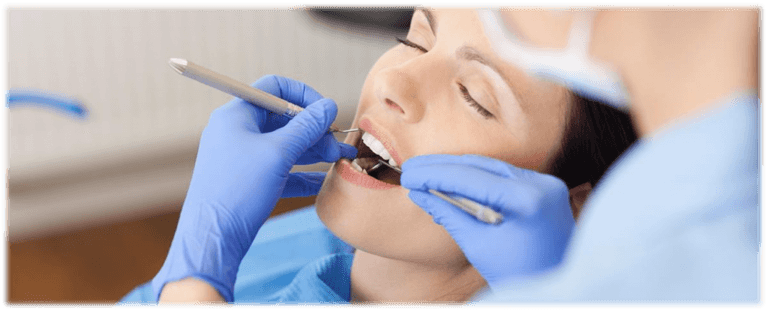
What Is Oral Conscious Sedation?
Dental anxiety and fear are common concerns that prevent many individuals from seeking the dental care they need, leading to potential oral health issues. Fortunately, dentistry has made significant advancements to address this problem, and one such solution is “Oral Conscious Sedation.” If the thought of visiting the dentist makes you uneasy or apprehensive, oral conscious sedation can be a game-changer, providing a relaxed and stress-free experience during your dental procedures.
Oral conscious sedation is a safe and effective technique used by dental professionals to manage anxiety and discomfort in patients. Unlike general anesthesia, which renders a person completely unconscious, oral conscious sedation allows you to remain awake and responsive throughout the procedure while experiencing a profound sense of relaxation and tranquility. This method involves administering prescribed medications called benzodiazepines in the form of pills or liquid, which are taken orally before the dental appointment.
Before considering oral conscious sedation, your dentist will conduct a thorough evaluation to ensure that you are a suitable candidate for this sedation option. Safety measures and guidelines will be followed throughout the process to provide a secure and comfortable experience. Before you deciding on whether Oral Conscious Sedation are right for you, there are some things you should know:
- Who Needs Oral Conscious Sedation?
- What Are The Advantages Of Oral Conscious Sedation?
- What Are The Potential Risks Or Complications Of Oral Conscious Sedation?
- What Are The Alternative Treatments If I Do Not Choose Oral Conscious Sedation?
- How Much Does Oral Conscious Sedation Cost?
- What Kinds Of Medications Do You Use?
- What Are The Steps In The Oral Conscious Sedation Procedure?
- Can I Have Sedation Dentistry If I Am Pregnant?
- How Long Does Oral Conscious Sedation Last?
If you have any further questions about oral conscious sedation or other dental services offered at Atlas Dental, please contact us.

Free phone consultation
Have questions about Oral conscious sedation? Schedule a free phone consultation with our Toronto dentist.

5 star google reviews
Our patients love us! See for yourself why more and more people are choosing Atlas Dental for Oral conscious sedation.

Book In Person Consult Online
Book an in-person consult to discuss your Oral conscious sedation case.
Who Needs Oral Conscious Sedation?
Oral conscious sedation is an excellent option for various individuals who experience dental anxiety, fear, or other barriers that may hinder them from receiving essential dental treatments. If you can relate to any of the following scenarios, oral conscious sedation might be the solution you need to make your dental visits more comfortable and stress-free:
- Dental Phobia and Anxiety: Dental phobia is a severe and often irrational fear of visiting the dentist, causing significant distress and avoidance of dental appointments. Likewise, dental anxiety refers to a milder but persistent fear of dental procedures. Both conditions can be highly debilitating and may result in postponing or neglecting necessary dental care. Oral conscious sedation helps manage these emotions, allowing individuals to undergo treatments without overwhelming anxiety.
- Gag Reflex Sensitivity: Some people have an overly sensitive gag reflex, which can make even routine dental procedures uncomfortable and challenging. The relaxed state induced by oral conscious sedation can help reduce the gag reflex’s intensity, making dental work more tolerable.
- Complex Dental Procedures: Certain dental treatments, such as extensive restorative work, dental implants, or multiple tooth extractions, might require an extended period of time in the dental chair. For patients and dentists alike, this can be physically and mentally taxing. Oral conscious sedation can help patients remain relaxed and cooperative during lengthy procedures, and it can assist the dental team in completing the treatment efficiently.
- Inability to Sit Still: Some individuals, especially young children or individuals with certain medical conditions, may find it challenging to sit still for an extended period. Oral conscious sedation can help promote a calmer state, making it easier for the dental team to perform necessary procedures.
- Traumatic Dental Experiences: Past negative dental experiences can leave a lasting impact, leading to heightened fear and apprehension about future visits. Oral conscious sedation can help break this cycle of fear, providing a more positive and less distressing dental encounter.
- Sensitive Teeth or Gums: Patients with sensitive teeth or gums may find dental procedures uncomfortable. Oral conscious sedation can minimize discomfort and help individuals tolerate dental work more easily.
- Need for Multiple Treatments: When several dental treatments are required, some patients may prefer to have them done in a single visit rather than making multiple appointments. Oral conscious sedation can enable more extensive dental work to be completed in one session.
- Time Constraints: Individuals with busy schedules may find it challenging to make frequent dental appointments. Oral conscious sedation can be a valuable tool in maximizing the efficiency of each dental visit, reducing the number of appointments needed for treatment.
It’s important to remember that oral conscious sedation is not only suitable for those with severe anxiety; it can also benefit individuals with milder discomfort or specific dental needs. If you find dental visits nerve-wracking or have any of the aforementioned concerns, talking to your dentist about oral conscious sedation could be the first step towards a more relaxed and positive dental experience. If you have further questions about Oral Conscious Sedation, please contact us.
What Are The Advantages Of Oral Conscious Sedation?
Oral conscious sedation offers a host of benefits, making it a sought-after solution for individuals with dental anxiety, fear, or specific dental needs. If you’ve been hesitant about undergoing dental treatments due to anxiety or discomfort, considering oral conscious sedation could be the key to transforming your dental experience. Let’s explore the advantages of this sedation technique:
- Reduces Dental Anxiety and Fear: The most significant advantage of oral conscious sedation is its ability to alleviate dental anxiety and fear. The calming effects of the sedative medication help patients relax and feel more at ease, creating a comfortable environment for dental procedures.
- Enhances Cooperation and Treatment Efficiency: By promoting relaxation, oral conscious sedation enhances patient cooperation during dental treatments. When patients are more relaxed, dentists can work more efficiently and complete procedures more effectively.
- Minimal Invasive Techniques: With oral conscious sedation, there is no need for injections or intravenous (IV) administration, making it an attractive option for individuals who fear needles or medical procedures.
- Amnesia Effect: Depending on the level of sedation, patients may experience partial or complete amnesia during the dental procedure. This means that even though they remain conscious, they are likely to have little to no memory of the treatment, helping to further reduce any negative associations with dental visits.
- Multiple Treatments in One Session: For individuals who require multiple dental treatments, oral conscious sedation allows dentists to perform several procedures in a single visit. This can be particularly beneficial for those with busy schedules or who prefer to minimize the number of dental appointments.
- Reduced Gag Reflex Sensitivity: Patients with a sensitive gag reflex may find it difficult to undergo certain dental procedures. Oral conscious sedation can help relax the reflex, making the experience more comfortable.
- Safe and Customized Approach: Oral conscious sedation is a safe and well-controlled sedation method. Dentists carefully assess each patient’s medical history and tailor the sedation plan according to their specific needs, ensuring a personalized and secure experience.
- Wide Applicability: Oral conscious sedation can be used for a broad range of dental treatments, from routine cleanings and fillings to more complex procedures like extractions or root canals.
- Reduced Discomfort During Recovery: After the procedure, patients may experience less discomfort and reduced memory of any pain or discomfort they may have felt during treatment, enhancing their post-operative recovery experience.
- Overcoming Dental Avoidance: For individuals who have been avoiding dental care due to anxiety, oral conscious sedation provides an opportunity to break the cycle of avoidance and prioritize oral health.
It’s essential to remember that oral conscious sedation should always be administered by a qualified dental professional who is trained in sedation dentistry. Prior to undergoing oral conscious sedation, your dentist will conduct a thorough evaluation, review your medical history, and discuss any potential risks or side effects. If you have further questions about Oral Conscious Sedation, please contact us.
What Are The Potential Risks Or Complications Of Oral Conscious Sedation?
While oral conscious sedation is generally considered safe and effective when administered by trained professionals, it’s essential to be aware of potential risks and complications associated with this sedation technique. Dentists carefully evaluate each patient’s medical history and overall health to minimize these risks. However, it’s crucial for patients to understand the possibilities and provide accurate information during the assessment. The potential risks of oral conscious sedation may include:
- Excessive Sedation: In some cases, the sedative medication may lead to deeper sedation than intended, resulting in excessive drowsiness or a prolonged period of altered consciousness. While this is uncommon, it underscores the importance of proper dosing and careful monitoring during the procedure.
- Respiratory Issues: Oral sedatives can cause respiratory depression in rare instances, especially if the dosage is not properly adjusted for a patient’s specific needs. This is why dentists continuously monitor patients’ breathing and oxygen levels during sedation.
- Allergic Reactions: Some individuals may have an allergic reaction to the sedative medication used in oral conscious sedation. This emphasizes the significance of informing the dental team about any known allergies before the procedure.
- Interaction with Other Medications: Oral sedative medications can interact with other drugs or substances a patient is taking, potentially leading to adverse effects. Patients should provide their dentist with a complete list of medications, supplements, and recreational substances they are using to avoid potential interactions.
- Nausea and Vomiting: Nausea and vomiting may occur in some patients after oral conscious sedation, particularly when waking up from a deeper level of sedation. Patients are usually advised to avoid heavy meals before the procedure to minimize this risk.
- Post-Sedation Drowsiness: After the dental procedure, patients may experience lingering drowsiness or grogginess as the sedative effects wear off. It’s essential to have someone accompany you to the appointment and ensure a safe journey back home.
- Memory Impairment: Depending on the level of sedation, patients may have partial or complete memory loss of the dental procedure. While this can be beneficial for those with dental anxiety, it may also mean patients have limited recall of post-operative instructions, necessitating clear communication with a responsible caregiver.
- Delayed Recovery in Older Patients: Older individuals may experience a slightly longer recovery time due to age-related factors, such as decreased drug metabolism. Dentists take these considerations into account when planning sedation for elderly patients.
It’s crucial to discuss any concerns or pre-existing medical conditions with your dentist before proceeding with oral conscious sedation. In rare cases, if any complications do arise during oral conscious sedation, dentists are trained to manage and address these situations promptly. It’s worth noting that the vast majority of patients who undergo oral conscious sedation experience no significant issues and benefit greatly from a more relaxed and anxiety-free dental experience. If you have further questions about Oral Conscious Sedation, please contact us.
What Are The Alternative Treatments If I Do Not Choose Oral Conscious Sedation?
If you are hesitant about using oral conscious sedation or if it is not suitable for your specific dental needs, there are alternative treatments and strategies available to help manage dental anxiety and discomfort. While these alternatives may not provide the same level of relaxation as oral conscious sedation, they can still significantly improve your dental experience. Here are some common alternatives to consider:
- Nitrous Oxide (Laughing Gas): Nitrous oxide is a mild form of sedation administered through a mask placed over the nose. It induces a feeling of relaxation and euphoria, helping to reduce anxiety during dental procedures. Unlike oral conscious sedation, the effects of nitrous oxide wear off quickly, allowing you to resume normal activities shortly after the procedure.
- Local Anesthesia: Local anesthesia involves injecting a numbing medication directly into the treatment area, ensuring that you do not feel pain during the procedure. Local anesthesia is typically used for most dental treatments and is an effective way to manage discomfort.
- Counseling and Behavioral Therapy: For individuals with severe dental anxiety or dental phobia, counseling or behavioral therapy can be beneficial. Techniques like cognitive-behavioral therapy (CBT) can help address and overcome dental-related fears and negative associations.
- Sedation Dentistry (Intravenous or IV Sedation): If you require a more profound level of sedation than oral conscious sedation can provide, intravenous (IV) sedation may be an alternative. IV sedation is administered directly into the bloodstream, allowing for deeper relaxation during dental procedures.
- Open Communication with Your Dentist: One of the most effective alternatives is open communication with your dentist about your fears and concerns. A supportive dentist can explain each step of the procedure, answer your questions, and work at a pace that makes you comfortable.
It’s crucial to work closely with your dentist to determine the most suitable alternative treatment for your specific needs and level of dental anxiety. Your dentist will consider factors such as your medical history, the complexity of the dental procedure, and your comfort level before recommending an appropriate approach. If you have further questions about Oral Conscious Sedation, please contact us.
Cost Of Oral Conscious Sedation
The cost of Oral conscious sedation will depend on the amount of time you are being monitored while under sedation, which is measured from the time you are administered the sedation medication, to the time you are discharged into the care of a responsible friend or family member. At Atlas Dental, Oral conscious sedation usually starts at four units (60 minutes) of monitored time, which costs $177. The amount of monitored time required will vary depending on the type of dental procedure. The codes relevant to Oral conscious sedation in the Ontario Dental Association’s Suggested Fee Guide appear as follows:
Oral Sedation – Sedation sufficient to require monitored care. Time is to be measured from the start of the patient monitoring to release from the treatment/recovery room
- 92421 – One unit of time (15 minutes): $93
- 92422 – Two units (30 minutes): $121
- 92423 – Three units (45 minutes): $149
- 92424 – Four units (60 minutes): $177
- 92425 – Five units (75 minutes): $205
- 92426 – Six units (90 minutes): $233
- 92427 – Seven units (105 minutes): $261
- 92428 – Eight units (120 minutes): $289
- 92429 – Each additional unit over eight (15 minutes): $28
Oral conscious sedation is usually considered a basic service under dental insurance plans and should be covered to your maximum insurable limit, but be sure to find out from your dental insurance plan provider how much you are eligible for before going ahead with dental treatment. Our fees are consistent with the ODA Fee Guide.
For patients without dental insurance, Atlas Dental is pleased to offer dental financing through Dentalcard. Affordable payment plans start at 7.95% for terms of 6 months to 6 years. To learn more about Dentalcard dental treatment financing, follow this link.
What Kinds Of Medications Do You Use?
When it comes to oral conscious sedation, there are a variety of medications that can be used. Two common medications that are used for oral conscious sedation are Lorazepam and Triazolam.
Lorazepam is a type of benzodiazepine, a class of medications that are commonly used for the treatment of anxiety and insomnia. It is considered a long-acting medication, which means it can last for several hours. Lorazepam is taken orally, usually in pill form, and it works by slowing down the activity of the brain and central nervous system, which can help to reduce anxiety and promote relaxation.
Triazolam also belongs to the benzodiazepine medication class. However, it is a short-acting drug, commonly prescribed for insomnia and anxiety. It is taken orally and it works by slowing down the activity of the brain and nervous system, promoting a calming effect. However, it starts working faster than lorazepam and its effects last for a shorter period of time.
Both of these medications can be effective for oral conscious sedation, and the choice of medication will depend on the specific needs of the patient, the procedure being performed and the dentist’s preference. Your dentist or anesthesiologist will be able to advise you on which medication is best for you. If you have further questions about Oral Conscious Sedation, please contact us.
What Are The Steps In The Oral Conscious Sedation Procedure?
The oral conscious sedation procedure involves several essential steps to ensure your safety, comfort, and well-being throughout the dental treatment. Your dentist and dental team will carefully guide you through each phase of the process, addressing any concerns or questions you may have. Here’s what you can expect during the oral conscious sedation procedure:
- Initial Consultation: The process begins with an initial consultation with your dentist. During this appointment, you will discuss your dental anxiety, medical history, and any relevant medications or allergies. Your dentist will also assess your oral health and the extent of the dental treatment required.
- Evaluation for Suitability: The dentist will evaluate your suitability for oral conscious sedation. Certain medical conditions or medications may affect the choice of sedation, so it’s essential to provide accurate and comprehensive information during this evaluation.
- Customized Sedation Plan: Based on the evaluation, your dentist will develop a customized sedation plan tailored to your specific needs. The plan will include the appropriate type and dosage of sedative medication.
- Preparation and Instructions: Prior to the sedation appointment, your dentist will provide detailed pre-visit instructions to follow. This may include guidelines on fasting before the procedure and arranging for a responsible adult to accompany you to the dental office and drive you home afterward.
- Administering the Sedative Medication: On the day of the procedure, you will take the prescribed oral sedative medication at the specified time before your appointment. The medication may come in the form of a pill or liquid, and you will be instructed on how and when to take it.
- Monitoring and Relaxation: After taking the medication, you will begin to experience a sense of relaxation and tranquility. Once at the dental office, the dental team will monitor your vital signs, such as blood pressure and pulse, to ensure your safety during the sedation.
- Starting the Dental Procedure: Once you are relaxed and the sedation has taken effect, the dental team will begin the dental procedure. Throughout the treatment, they will continue to monitor your vital signs and make any necessary adjustments to the sedation level.
- Post-Sedation Recovery: After the dental procedure is complete, you will be allowed to rest comfortably as the sedative effects gradually wear off. The dental team will closely monitor your recovery and provide any post-operative instructions.
- Arranging Transportation Home: Since the sedative effects can last for several hours, it is essential to have someone accompany you home after the procedure. Avoid driving, operating heavy machinery, or making significant decisions until the sedative has completely worn off.
- Follow-Up: Your dentist may schedule a follow-up appointment to ensure your well-being and address any concerns you may have after the oral conscious sedation procedure.
Throughout the entire process, your dental team will prioritize your comfort and safety, making the dental experience as stress-free and positive as possible. It’s crucial to communicate openly with your dentist and dental staff, as they are there to support you and address any questions or apprehensions you may have. If you have further questions about Oral Conscious Sedation, please contact us.
Can I Have Sedation Dentistry If I Am Pregnant?
The answer to whether or not you can have sedation dentistry if you are pregnant is generally no. Sedation dentistry, including oral conscious sedation, is typically not recommended for women who are pregnant.
The safety of oral conscious sedation during pregnancy depends on several factors, including the stage of pregnancy, the specific medication used, and the overall health of the mother and baby. Typically, elective dental treatments are best postponed until after delivery, especially during the first trimester when fetal development is critical.
However, in cases of dental emergencies or essential dental procedures, there are alternative approaches that can be considered for managing discomfort and anxiety during pregnancy:
- Local Anesthesia: For most routine dental procedures, local anesthesia (numbing medication) can be safely administered during pregnancy. Local anesthesia is generally considered safe for both the mother and the baby.
- Nitrous Oxide (Laughing Gas): Nitrous oxide is another option that can be considered for managing anxiety during dental procedures in pregnant women. It is a relatively mild form of sedation and can be quickly eliminated from the body after the procedure.
- Postponing Non-Essential Procedures: Whenever possible, elective dental treatments that can wait until after delivery should be postponed to minimize any potential risks associated with medications or sedation.
- Communication with Your Healthcare Provider: It is crucial to communicate openly with your dentist and obstetrician about your pregnancy. Your healthcare providers will collaborate to determine the most suitable and safe approach for your dental care during pregnancy.
If oral conscious sedation is deemed necessary for a dental procedure during pregnancy, your dentist will consult with your obstetrician and take extra precautions to ensure the safety of both you and your baby. It’s essential to have a clear understanding of the potential risks and benefits associated with any sedation or medications used during pregnancy. If you have further questions about Oral Conscious Sedation, please contact us.
How Long Does Oral Conscious Sedation Last?
The duration of oral conscious sedation can vary depending on the specific medication used, the dosage, and individual factors such as metabolism and overall health. The effects of oral conscious sedation typically last for several hours, and it’s essential to plan accordingly for your dental appointment.
Here’s a general timeline of how long you can expect the effects of oral conscious sedation to last:
- Onset of Sedation: The sedative medication will begin to take effect within 30 minutes to an hour after taking it orally. During this time, you may start to feel more relaxed and drowsy.
- During the Dental Procedure: The level of sedation will be carefully monitored by the dental team throughout the dental procedure. You will likely remain conscious and responsive, but in a state of deep relaxation.
- After the Dental Procedure: After the dental treatment is complete, the sedative effects will gradually start to wear off. However, you may continue to feel drowsy and groggy for several hours after the procedure.
- Recovery Period: The recovery period from oral conscious sedation can vary from person to person. Generally, it is recommended to avoid driving, operating heavy machinery, or making significant decisions for the remainder of the day after the procedure.
- Post-Sedation Drowsiness: Some patients may experience lingering drowsiness or reduced alertness for several hours after the sedation wears off. Resting and taking it easy during this time is essential.
The duration of oral conscious sedation may be influenced by individual factors such as age, body weight, and overall health. Additionally, the specific sedative medication used will determine how long the effects last. It’s crucial to follow any post-operative instructions provided by your dentist, which may include guidelines for eating, drinking, and taking medications after the procedure. If you have further questions about Oral Conscious Sedation, please contact us.
We also think you’ll like…
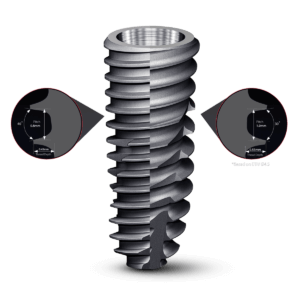
Hiossen Dental Implants
Hiossen Dental Implants What Are Hiossen Dental Implants? Hiossen is a reputable dental implant company with a global presence, known for its commitment to providing
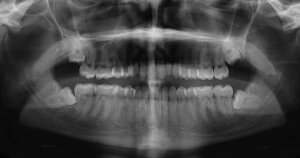
Wisdom Tooth Removal Consent Form
Wisdom Tooth Removal Consent Form There will be some pain, swelling and bleeding following a tooth extraction. This may require pain-relieving medication. Bleeding is usually
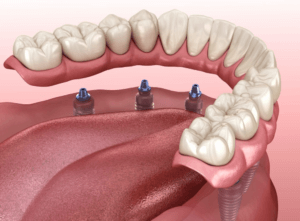
Implant Denture
Implant Denture What Is An Implant Denture? An Implant Denture, also known as an implant-supported overdenture, is a dental appliance designed to restore missing teeth
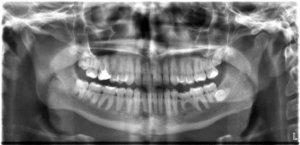
Panoramic X-Ray
Panoramic X-Ray What Is A Panoramic X-Ray Scan? A Panoramic X-Ray scan, also known as a Panoramic radiograph or orthopantomogram (OPG), is a specialized 2D
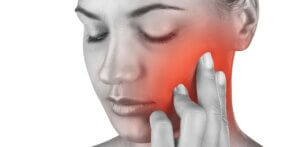
Myogenic Trismus Home Care Instructions
Myogenic Trismus Home Care Instructions What Is Trismus? When your jaw muscles become so tight that you have difficulty opening your mouth wide, you may
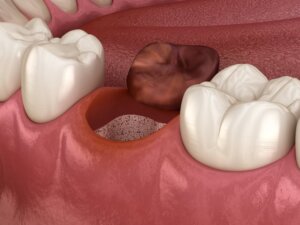
Dry Socket: Symptoms, Causes, Prevention & Treatment
Dry Socket: Symptoms, Causes, Prevention & Treatment What Is A Dry Socket? Dry socket is also called alveolar osteitis. After having regular tooth removal or

